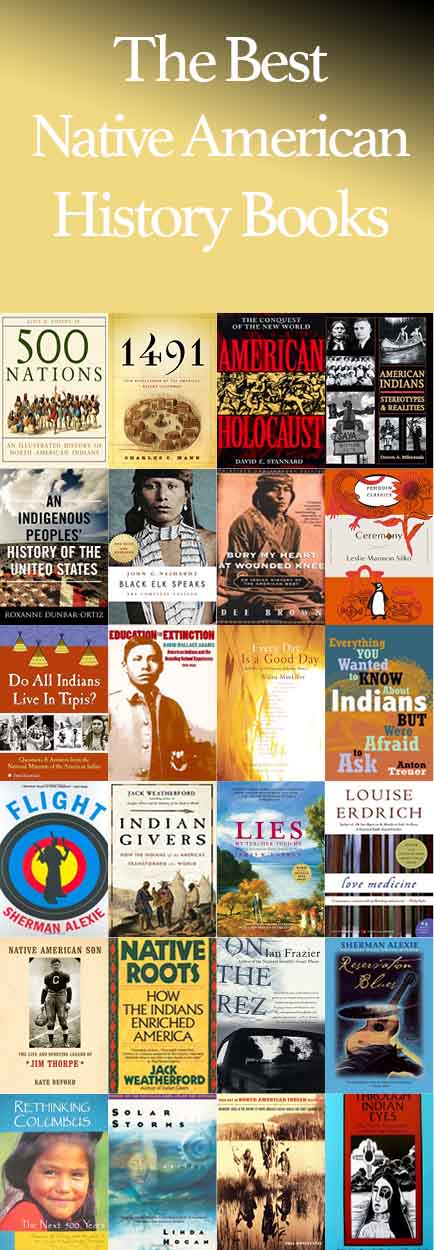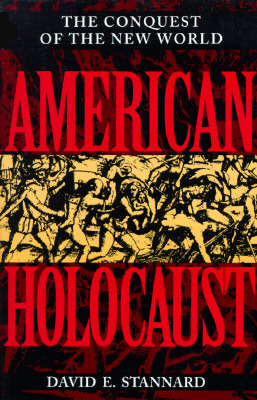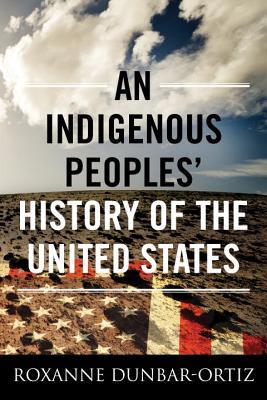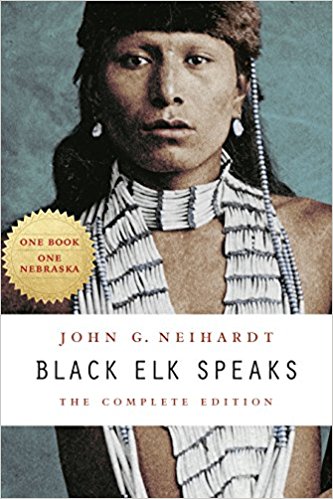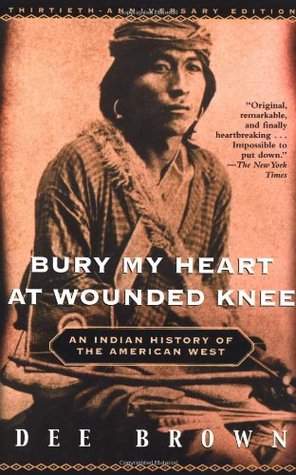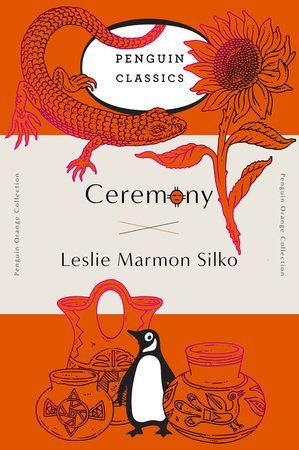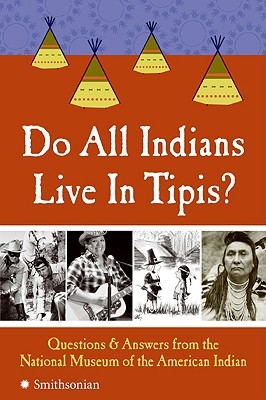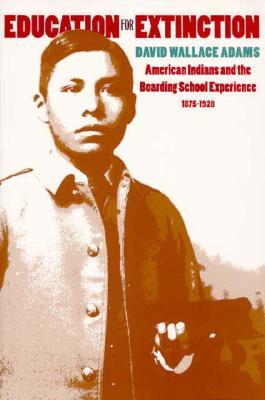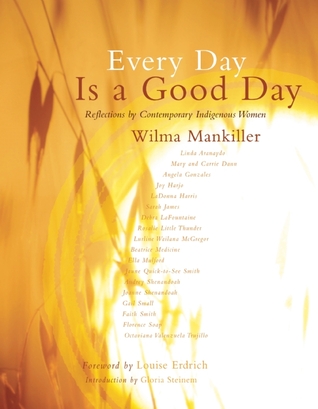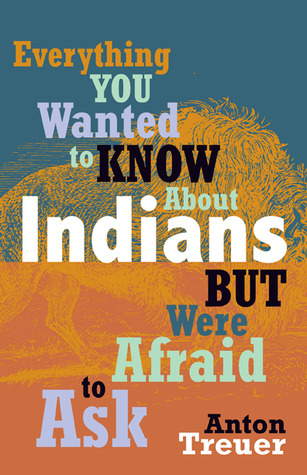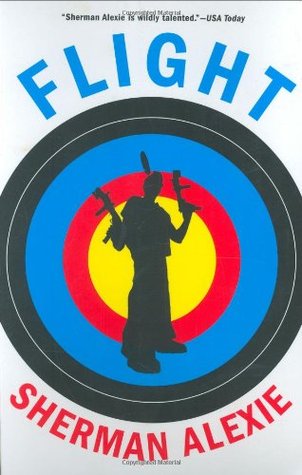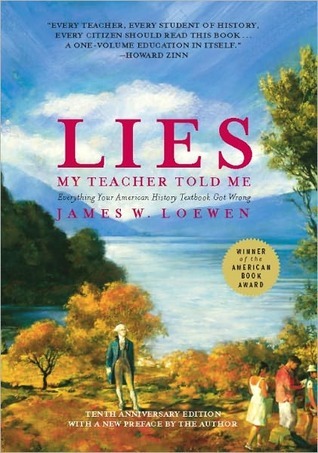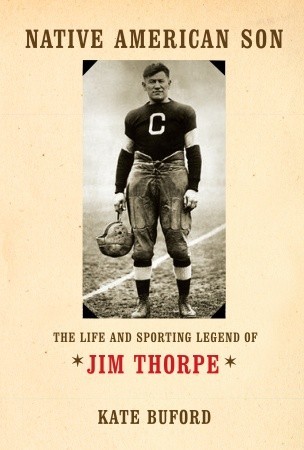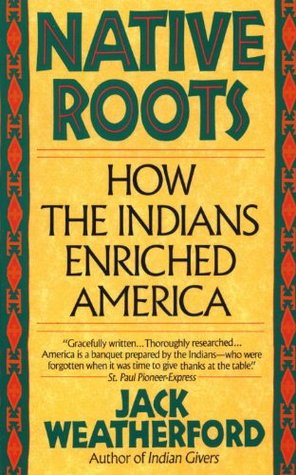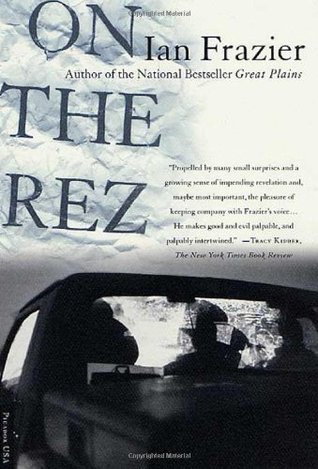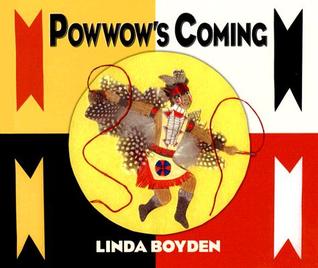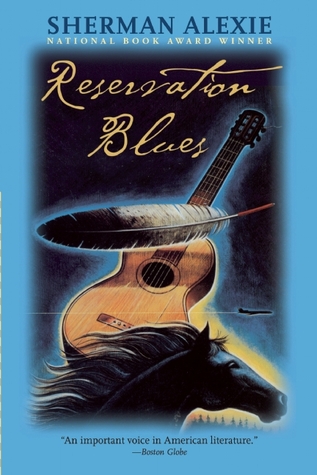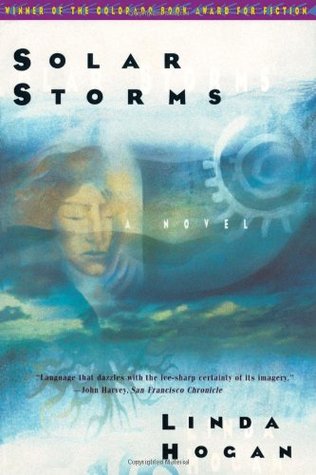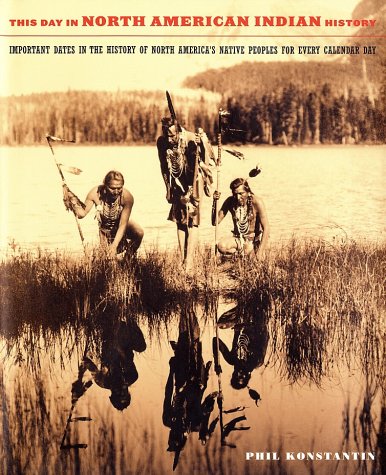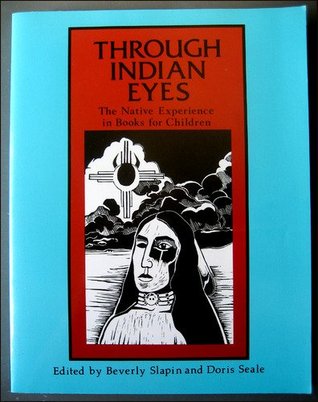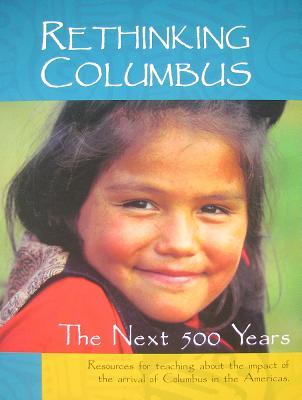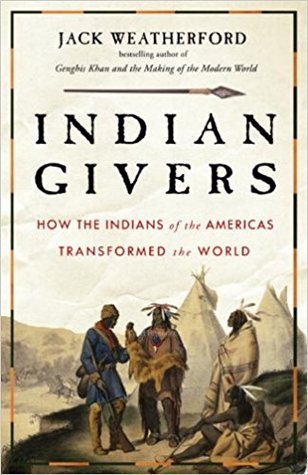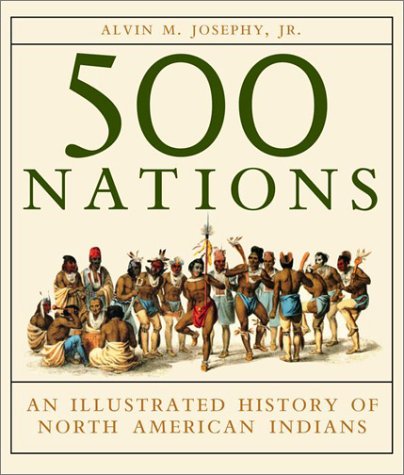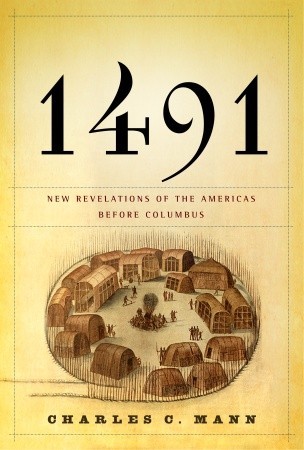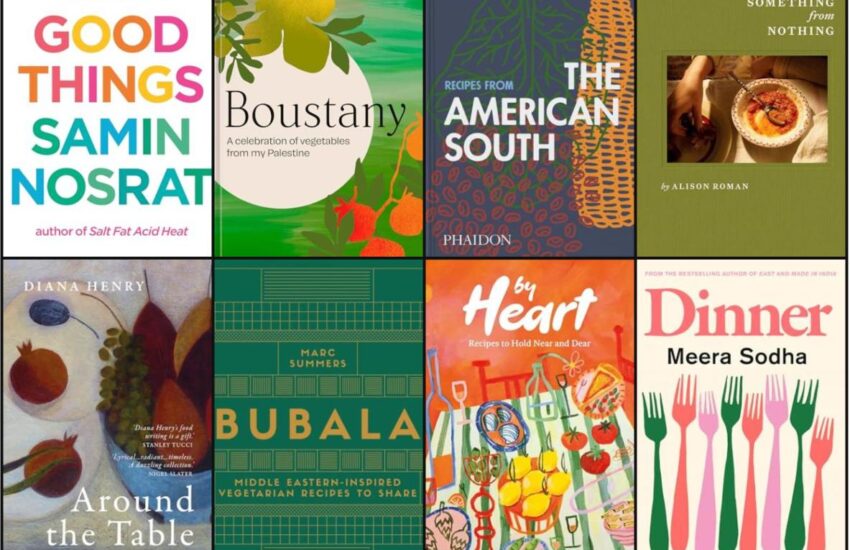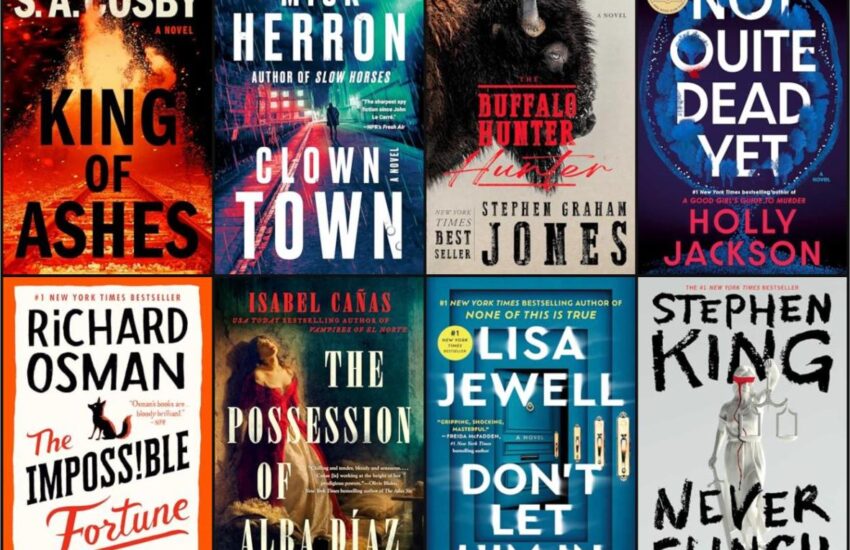The Best Native American History Books
“What are the best books to learn more about Native American History?” We looked at 288 of the top books, aggregating and ranking them so we could answer that very question!
We looked at 13 “Best Native American History” book lists and found 288 different titles listed, 25 of which appeared multiple times. Below we ranked the top books by how many times they appeared. The remaining 25+ titles, as well as the lists we used, are in alphabetical order on the bottom of the page.
Happy Scrolling!
Top 25 Best Native American History Books
25 .) American Holocaust: The Conquest of the New World by David Stannard
Lists It Appears On:
- First Nations
- Hanksville
For four hundred years–from the first Spanish assaults against the Arawak people of Hispaniola in the 1490s to the U.S. Army’s massacre of Sioux Indians at Wounded Knee in the 1890s–the indigenous inhabitants of North and South America endured an unending firestorm of violence. During that time the native population of the Western Hemisphere declined by as many as 100 million people. Indeed, as historian David E. Stannard argues in this stunning new book, the European and white American destruction of the native peoples of the Americas was the most massive act of genocide in the history of the world.
24 .) American Indians: Stereotypes & Realities by Devon A Mihesuah
Lists It Appears On:
- First Nations
- Hanksville
23 .) An Indigenous Peoples’ History of the United States by Roxanne Dunbar-Ortiz
Lists It Appears On:
- IAIS Museum
- New Books Network
Today in the United States, there are more than five hundred federally recognized Indigenous nations comprising nearly three million people, descendants of the fifteen million Native people who once inhabited this land. The centuries-long genocidal program of the US settler-colonial regimen has largely been omitted from history. Now, for the first time, acclaimed historian and activist Roxanne Dunbar-Ortiz offers a history of the United States told from the perspective of Indigenous peoples and reveals how Native Americans, for centuries, actively resisted expansion of the US empire.
22 .) Black Elk Speaks by John Neihardt
Lists It Appears On:
- First Nations
- IAIS Museum
“Black Elk Speaks, the story of the Oglala Lakota visionary and healer Nicholas Black Elk (1863–1950) and his people during momentous twilight years of the nineteenth century, offers readers much more than a precious glimpse of a vanished time. Black Elk’s searing visions of the unity of humanity and Earth, conveyed by John G. Neihardt, have made this book a classic that crosses multiple genres. Whether appreciated as the poignant tale of a Lakota life, as a history of a Native nation, or as an enduring spiritual testament, Black Elk Speaks is unforgettable.
Black Elk met the distinguished poet, writer, and critic John G. Neihardt in 1930 on the Pine Ridge Reservation in South Dakota and asked Neihardt to share his story with the world. Neihardt understood and conveyed Black Elk’s experiences in this powerful and inspirational message for all humankind.”
21 .) Bury My Heart at Wounded Knee by Dee Brown
Lists It Appears On:
- First Nations
- Native Languages
“Immediately recognized as a revelatory and enormously controversial book since its first publication in 1971, Bury My Heart at Wounded Knee is universally recognized as one of those rare books that forever changes the way its subject is perceived. Now repackaged with a new introduction from bestselling author Hampton Sides to coincide with a major HBO dramatic film of the book, Bury My Heart at Wounded Knee.
Bury My Heart at Wounded Knee is Dee Brown’s classic, eloquent, meticulously documented account of the systematic destruction of the American Indian during the second half of the nineteenth century. A national bestseller in hardcover for more than a year after its initial publication, it has sold over four million copies in multiple editions and has been translated into seventeen languages.”
20 .) Ceremony by Leslie Marmon Silko
Lists It Appears On:
- First Nations
- Infoplease
Thirty years since its original publication, Ceremony remains one of the most profound and moving works of Native American literature, a novel that is itself a ceremony of healing. Tayo, a World War II veteran of mixed ancestry, returns to the Laguna Pueblo Reservation. He is deeply scarred by his experience as a prisoner of the Japanese and further wounded by the rejection he encounters from his people. Only by immersing himself in the Indian past can he begin to regain the peace that was taken from him. Masterfully written, filled with the somber majesty of Pueblo myth, Ceremony is a work of enduring power.
19 .) Do All Indians Live in Tipis? Questions and Answers from the National Museum of the American Indian
Lists It Appears On:
- Indian Country Today
- Smithsonian
If you’ve ever wondered about where Native Americans came from, whether they really used smoke signals, or if they wore socks, this book has the answers. From clothing, food, origins, ceremonies, and language to love, marriage, art, music, and casinos, DO ALL INDIANS LIVE IN TIPIS? debunks widespread stereotypes and answers all of the most common questions about Native Americans. Accessible and enlightening, this is the perfect introduction to Native American history and contemporary culture.
18 .) Education for extinction: American Indians and the boarding school experience by David Wallace Adams
Lists It Appears On:
- First Nations
- Hanksville
“The last “”Indian War”” was fought against Native American children in the dormitories and classrooms of government boarding schools. Only by removing Indian children from their homes for extended periods of time, policymakers reasoned, could white “”civilization”” take root while childhood memories of “”savagism”” gradually faded to the point of extinction. In the words of one official: “”Kill the Indian and save the man.””
Education for Extinction offers the first comprehensive account of this dispiriting effort. Much more than a study of federal Indian policy, this book vividly details the day-to-day experiences of Indian youth living in a “”total institution”” designed to reconstruct them both psychologically and culturally. The assault on identity came in many forms: the shearing off of braids, the assignment of new names, uniformed drill routines, humiliating punishments, relentless attacks on native religious beliefs, patriotic indoctrinations, suppression of tribal languages, Victorian gender rituals, football contests, and industrial training.
Especially poignant is Adams’s description of the ways in which students resisted or accommodated themselves to forced assimilation. Many converted to varying degrees, but others plotted escapes, committed arson, and devised ingenious strategies of passive resistance. Adams also argues that many of those who seemingly cooperated with the system were more than passive players in this drama, that the response of accommodation was not synonymous with cultural surrender. This is especially apparent in his analysis of students who returned to the reservation. He reveals the various ways in which graduates struggled to make sense of their lives and selectively drew upon their school experience in negotiating personal and tribal survival in a world increasingly dominated by white men.”
17 .) Every Day is a Good Day by Wilma Mankiller
Lists It Appears On:
- First Nations
- Signature
A rare and often intimate glimpse at the resilience and perserverance of Native women who face each day positively and see the richnes in their lives.
16 .) Everything You Wanted to Know About Indians But Were Afraid to Ask by Anton Treuer
Lists It Appears On:
- First Nations
- Indian Country Today
“””I had a profoundly well-educated Princetonian ask me, ‘Where is your tomahawk?’ I had a beautiful woman approach me in the college gymnasium and exclaim, ‘You have the most beautiful red skin.’ I took a friend to see Dances with Wolves and was told, ‘Your people have a beautiful culture.’ . . . I made many lifelong friends at college, and they supported but also challenged me with questions like, ‘Why should Indians have reservations?'””
What have you always wanted to know about Indians? Do you think you should already know the answers—or suspect that your questions may be offensive? In matter-of-fact responses to over 120 questions, both thoughtful and outrageous, modern and historical, Ojibwe scholar and cultural preservationist Anton Treuer gives a frank, funny, and sometimes personal tour of what’s up with Indians, anyway.”
15 .) Flight by Sherman Alexie
Lists It Appears On:
- IAIS Museum
- Infoplease
The best-selling author of multiple award-winning books returns with his first novel in ten years, a powerful, fast and timely story of a troubled foster teenager — a boy who is not a “legal” Indian because he was never claimed by his father — who learns the true meaning of terror. About to commit a devastating act, the young man finds himself shot back through time on a shocking sojourn through moments of violence in American history. He resurfaces in the form of an FBI agent during the civil rights era, inhabits the body of an Indian child during the battle at Little Big Horn, and then rides with an Indian tracker in the 19th Century before materializing as an airline pilot jetting through the skies today. When finally, blessedly, our young warrior comes to rest again in his own contemporary body, he is mightily transformed by all he’s seen. This is Sherman Alexie at his most brilliant — making us laugh while breaking our hearts. Simultaneously wrenching and deeply humorous, wholly contemporary yet steeped in American history, Flight is irrepressible, fearless, and again, groundbreaking Alexie.
14 .) LIES MY TEACHER TOLD ME: Everything Your American History Textbook Got Wrong by James Loewen
Lists It Appears On:
- Hanksville
- Manataka
“This updated and revised edition of the American Book Award-winner and national bestseller revitalizes the truth of America’s history, explores how myths continue to be perpetrated, and includes a new chapter on 9/11 and the Iraq War.
Americans have lost touch with their history, and in Lies My Teacher Told Me Professor James Loewen shows why. After surveying eighteen leading high school American history texts, he has concluded that not one does a decent job of making history interesting or memorable. Marred by an embarrassing combination of blind patriotism, mindless optimism, sheer misinformation, and outright lies, these books omit almost all the ambiguity, passion, conflict, and drama from our past.”
13 .) Love Medicine by Louise Erdrich
Lists It Appears On:
- First Nations
- Infoplease
“Set on and around a North Dakota Ojibwe reservation, Love Medicine—the first novel by bestselling, National Book Award-winning author Louise Erdrich—is the epic story about the intertwined fates of two families: the Kashpaws and the Lamartines.
With astonishing virtuosity, each chapter draws on a range of voices to limn its tales. Black humor mingles with magic, injustice bleeds into betrayal, and through it all, bonds of love and family marry the elements into a tightly woven whole that pulses with the drama of life.”
12 .) Native American Son by Kate Buford
Lists It Appears On:
- New Books Network
- Signature
“The first comprehensive biography of the legendary figure who defined excellence in American sports: Jim Thorpe, arguably the greatest all-around athlete the United States has ever seen.
With clarity and a fine eye for detail, Kate Buford traces the pivotal moments of Thorpe’s incomparable career: growing up in the tumultuous Indian Territory of Oklahoma; leading the Carlisle Indian Industrial School football team, coached by the renowned “Pop” Warner, to victories against the country’s finest college teams; winning gold medals in the 1912 Olympics pentathlon and decathlon; defining the burgeoning sport of professional football and helping to create what would become the National Football League; and playing long, often successful—and previously unexamined—years in professional baseball.
But, at the same time, Buford vividly depicts the difficulties Thorpe faced as a Native American—and a Native American celebrity at that—early in the twentieth century. We also see the infamous loss of his Olympic medals, stripped from him because he had previously played professional baseball, an event that would haunt Thorpe for the rest of his life. We see his struggles with alcoholism and personal misfortune, losing his first child and moving from one failed marriage to the next, coming to distrust many of the hands extended to him. Finally, we learn the details of his vigorous advocacy for Native American rights while he chased a Hollywood career, and the truth behind the supposed reinstatement of his Olympic record in 1982. “
11 .) Native Roots by Jack Weatherford
Lists It Appears On:
- First Nations
- Smithsonian
Conventional American history holds that the white settlers of the New World re-created the societies they had known in England, France, and Spain. But as anthropologist Jack Weatherford, author of INDIAN GIVERS, brilliantly shows, the Europeans actually grafted their civilization onto the deep and nourishing roots of Native American customs and beliefs. Our place names, our farming and hunting techniques, our crafts, the very blood that flows in our veins–all derive from American Indians ways that we consistently fail to see.
10 .) On the Rez by Ian Frazier
Lists It Appears On:
- First Nations
- Signature
“On the Rez is a sharp, unflinching account of the modern-day American Indian experience, especially that of the Oglala Sioux, who now live on the Pine Ridge Indian Reservation in the plains and badlands of the American West. Crazy Horse, perhaps the greatest Indian war leader of the 1800s, and Black Elk, the holy man whose teachings achieved worldwide renown, were Oglala; in these typically perceptive pages, Frazier seeks out their descendants on Pine Ridge―a/k/a “”the rez””―which is one of the poorest places in America today.
Along with his longtime friend Le War Lance (whom he first wrote about in his 1989 bestseller, Great Plains) and other Oglala companions, Frazier fully explores the rez as they visit friends and relatives, go to pow-wows and rodeos and package stores, and tinker with a variety of falling-apart cars. He takes us inside the world of the Sioux as few writers ever have, writing with much wit, compassion, and imagination. In the career of SuAnne Big Crow, for example, the most admired Oglala basketball player of all time, who died in a car accident in 1992, Frazier finds a contemporary reemergence of the death-defying, public-spirited Sioux hero who fights with grace and glory to save her followers.”
9 .) Powwow by Linda Boyden
Lists It Appears On:
- Colorin Colorado
- Native Languages
“Frustrated as a schoolteacher not being able to find good instructional materials on American Indians, Linda Boyden has bypassed the tired stereotype of Indians on horseback or hunting game and placed them in today’s setting of a powwow.
Powwow’s Coming provides children with a foundation for understanding and celebrating the enduring culture and heritage of American Indians. Boyden’s exquisite cut-paper collage and engaging poem visually place readers within the scenes of a contemporary Native American community while offering a thoughtful look at powwows and their meanings to the Native participants.”
8 .) Reservation Blues by Sherman Alexie
Lists It Appears On:
- First Nations
- Infoplease
“What many may not know is that after this tragic deal in Mississippi, Johnson ended up in a small town on the Spokane Indian reservation in Washington state-at least that’s how author Sherman Alexie tells it.
In his new book Reservation Blues, Alxie spins the fictional tale of Johnson’s adventure at a new crossroads, this one in a small town called Wellpinit, Wash. It is here that he comes to seek out Big Mom, a local medicine woman, and, in so doing, leaves his famous guitar in the hands of misfit storyteller Thomas Builds-the-Fire.
Builds-the-Fire, brought back from Alexie’s last book, The Lone Ranger and Tonto Fistfight in Heaven, takes up Johnson’s magical guitar and, along with Victor Joseph, Junior Polatkin and two Flathead Indian sisters named Chess and Checkers, goes on to build a reservation blues band that takes the Northwest by storm…
As the band plays club after club, Alexie uses music as a crosscultural bridge, without compromising the cultural integrity of his characters. The band members seem to take on the gamut of problems faced by Indians on the reservation today, battling everything from alcoholism to violence, political corruption to sexual abuse.”
7 .) Solar Storms by Linda Hogan
Lists It Appears On:
- First Nations
- Infoplease
“At seventeen, Angela returns to the place where she was raised—a stunning island town that lies at the border of Canada and Minnesota—where she finds that an eager developer is planning a hydroelectric dam that will leave sacred land flooded and abandoned. Joining up with three other concerned residents, Angela fights the project, reconnecting with her ancestral roots as she does so.
Harrowing, lyrical, and boldly incisive, Solar Storms is a powerful examination of the clashes between cultures and traumatic repercussions that have shaped American history.”
6 .) THIS DAY IN NORTH AMERICAN INDIAN HISTORY: Events in the History of North America’s Native Peoples by Phil Konstantin
Lists It Appears On:
- Indian Country Today
- Manataka
This Day in North American Indian History is a one-of-a-kind, fun-to-read book covering over 5,000 years of North American Indian history, culture, and lore. Wide-ranging and in-depth, it lists over 5,000 important events involving the native peoples of North America in a unique day-by-day format.From the construction of Mayan temples in A.D. 715 to modern political activism and governmental legislation affecting native peoples-and everything in between-virtually every significant historical event in Indian history is listed. It also includes biographical sketches of prominent and lesser-known North American Indian leaders, chiefs, explorers, and their white counterparts, descriptions of migrations, the histories of tribes and ancient languages, and a list of the meanings of tribal names. Well-organized and comprehensive, the thousands of entries in This Day in North American Indian History weave an exciting and panoramic mosaic of North American Indian history.
5 .) Through Indian Eyes by Slapin, B., & Scale, D.
Lists It Appears On:
- Colorin Colorado
- Hanksville
- Smithsonian
Essays, poetry, bibliography, and critical reviews of children’s books by and about Indian peoples. A dependable and honest guide for parents and instructors interested in teaching kids about the diversity of Native America.
4 .) Rethinking Columbus: The Next 500 Years by Bill Bigelow and Bob Peterson
Lists It Appears On:
- Colorin Colorado
- IAIS Museum
- Indian Country Today
This is a revised and expanded edition of a popular 1991 booklet that changed the way “the discovery of America” is taught in classroom and community settings. The new edition has over 100 pp. of new material, including a role-play trial of Columbus, materials on Thanksgiving Day, resources, historical documents, poetry, and more. It will help readers replace murky legends with a better sense of who we are and why we are here — and celebrates over 500 years of the courageous struggles and lasting wisdom of native peoples.
3 .) Indian Givers: How the Indians of the Americas Transformed the World by Jack Weatherford
Lists It Appears On:
- First Nations
- Indian Country Today
- Smithsonian
After 500 years, the world’s huge debt to the wisdom of the Indians of the Americas has finally been explored in all its vivid drama by anthropologist Jack Weatherford. He traces the crucial contributions made by the Indians to our federal system of government, our democratic institutions, modern medicine, agriculture, architecture, and ecology, and in this astonishing, ground-breaking book takes a giant step toward recovering a true American history.
2 .) 500 Nations: An Illustrated History of North American Indians by Alvin M., Jr. Josephy
Lists It Appears On:
- Manataka
- Native Languages
- Smithsonian
The story of Native American leaders, customs, political systems, and ways of life, this is American history from the Native American perspective: friendship, betrayal, war, and ultimately, the loss of homeland. A companion volume to the CBS series produced by Kevin Costner, Jack Leustig, and James Wilson scheduled to air in 1995.
1 .) 1491: New Revelations of the Americas Before Columbus by Charles C. Mann
Lists It Appears On:
- IAIS Museum
- Indian Country Today
- Smithsonian
Contrary to what so many Americans learn in school, the pre-Columbian Indians were not sparsely settled in a pristine wilderness; rather, there were huge numbers of Indians who actively molded and influenced the land around them. The astonishing Aztec capital of Tenochtitlan had running water and immaculately clean streets, and was larger than any contemporary European city. Mexican cultures created corn in a specialized breeding process that it has been called man’s first feat of genetic engineering. Indeed, Indians were not living lightly on the land but were landscaping and manipulating their world in ways that we are only now beginning to understand. Challenging and surprising, this a transformative new look at a rich and fascinating world we only thought we knew.
The 200+ Additional Best Native American History Books
| # | Books | Author | Lists |
| (Titles Appear On 1 List Each) | |||
| 26 | 1493: Uncovering the New World Columbus Created | Indian Country Today | |
| 27 | A Boy Called Slow | Joseph Bruchac | The Best Childrens Books |
| 28 | A Broken Flute: The Native Experience in Books for Children | Colorin Colorado | |
| 29 | A Generation Removed | MARGARET D. JACOBS | New Books Network |
| 30 | A Native American Encyclopedia | Native Languages | |
| 31 | A Whale Hunt: How a Native-American Village Did What No One Thought It Could | Robert Sullivan | First Nations |
| 32 | After Columbus: The Horse’s Return to America | Smithsonian | |
| 33 | After Columbus: The Smithsonian Chronicle of the North American Indians | Smithsonian | |
| 34 | All the Real Indians Died Off: And 20 Other Myths About Native Americans | Roxanne Dunbar-Ortiz | IAIS Museum |
| 35 | America’s Fascinating Indian Heritage | Smithsonian | |
| 36 | American Girl Kaya, 1764 | The Best Childrens Books | |
| 37 | American Indian Facts of Life | Smithsonian | |
| 38 | American Indian holocaust and survival: A population history since 1492. Norman: University of Oklahoma Press. | Thornton, R. | Hanksville |
| 39 | American Indian Politics and the American Political System | David E Wilkins | First Nations |
| 40 | American Indian reference books for children and young adults. Englewood | Kuipers, B. J. | Hanksville |
| 41 | American Indian Sovereignty and the U.S | David E Wilkins | First Nations |
| 42 | American Indian Tribal Governments | Sharon O’Brien | First Nations |
| 43 | American Indians and the American Imaginary | PAULINE TURNER STRONG | New Books Network |
| 44 | American Indians and U.S | John ed Meyer | First Nations |
| 45 | American Indians, Time, and the Law | Charles Wilkinson | First Nations |
| 46 | American Indians: Answers to Today’s Questions | Smithsonian | |
| 47 | An American Genocide | BENJAMIN MADLEY | New Books Network |
| 48 | Anpao: An American Indian Odyssey | Jamake Highwater | The Best Childrens Books |
| 49 | Anti-Indianism in Modern America | Elizabeth Cook-Lynn | First Nations |
| 50 | Atlas of the North American Indian | Native Languages | |
| 51 | Aunt Sarah, Woman of the Dawnland: The 108 Winters of an Abenaki Healing Woman | Trudy Ann Parker | IAIS Museum |
| 52 | Authentic Indians: Episodes of Encounter from the Late-Nineteenth-Century Northwest Coast A John Hope Franklin Center Book | Paige Raibmon | First Nations |
| 53 | Beet Queen | Louise Erdrich | First Nations |
| 54 | Bingo Palace | Louise Erdrich | First Nations |
| 55 | Black Hawk | Native Languages | |
| 56 | Black Indians: A Hidden Heritage | Smithsonian | |
| 57 | Blood Brothers | DEANNE STILLMAN | New Books Network |
| 58 | Blood Struggle | Charles Wilkinson | First Nations |
| 59 | Bloodland: A Family Story of Oil, Greed and Murder on the Osage Reservation | Dennis McAuliff | First Nations |
| 60 | Changing Military Patterns of the Great Plains Indians | Frank Raymond Secoy | Foreign Policy |
| 61 | Charcoal’s World | Native Languages | |
| 62 | Cheyenne Again | Native Languages | |
| 63 | Cheyenne-Arapaho Education, 1871-1981 | Henrietta Mann | First Nations |
| 64 | Children of the Midnight Sun: Young Native Voices of Alaska | Smithsonian | |
| 65 | Chiricahua and Janos | LANCE R. BLYTH | New Books Network |
| 66 | Clovis Technology | BRUCE A. BRADLEY, MICHAEL B. COLLINS, AND ANDREW HEMMINGS | New Books Network |
| 67 | Clyde Warrior | PAUL MCKENZIE-JONES | New Books Network |
| 68 | Code Talker | Joseph Bruchac | IAIS Museum |
| 69 | Columbus: His Enterprise; Exploding the Myth | Smithsonian | |
| 70 | Command & Contest Ground: A Human and Environmental History of the Northwestern Plains | Theodore Binnema | Foreign Policy |
| 71 | Connecticut’s Indigenous Peoples: What Archaeology, History, and Oral Traditions Teach Us About Their Communities and Cultures | Lucianne Lavin | IAIS Museum |
| 72 | Conquest of Paradise | Kirkpatrick Sale | First Nations |
| 73 | Conquest: Sexual Violence And American Indian Genocide | Andrea Smith | First Nations |
| 74 | Contemporary Native American Political Issues | Troy Johnson | First Nations |
| 75 | Contest Plains: Indians | Elliot West | Foreign Policy |
| 76 | Countering prejudice against American Indian and Alaska Natives through antibias curriculum and instruction. Clearinghouse on Rural Education and Small Schools | Almeida, D. A. | Hanksville |
| 77 | Counting Coup – about a girls basketball team in Montana | Larry Colten | First Nations |
| 78 | Counting Coup and Cutting Horses: Intertribal Warfare on the Northern Plains | Anthony R. McGinnis | Foreign Policy |
| 79 | Crazy Horse and Custer | Stephen Ambrose | Signature |
| 80 | Creek Paths and Federal Roads | ANGELA PULLEY HUDSON | New Books Network |
| 81 | Crooked Paths to Allotment | JOSEPH GENETIN-PILAWA | New Books Network |
| 82 | Cultural conflicts: An important factor in academic failures of American Indian students. Journal of Multicultural Counseling and Development | Sanders, S. | Hanksville |
| 83 | Culturally responsive pedagogy in action: An American Indian magnet school. In E. R. Hollins | Pewewardy, C. D. | Hanksville |
| 84 | Custer Died for Your Sins: An Indian Manifesto | Vine Deloria | First Nations |
| 85 | Dancing at Halftime: Sports and the Controversy over American Indian Mascots | Carol Spindel | First Nations |
| 86 | Decolonizing Methodologies: Research and Indigenous Peoples | Linda Tuhiwai Smith | First Nations |
| 87 | Decolonizing Museums | AMY LONETREE | New Books Network |
| 88 | Documents of United State Indians | Francis Paul Prucha | First Nations |
| 89 | Domestic Subjects | BETH H. PIATOTE | New Books Network |
| 90 | Dysconscious racism: Ideology | King, J. E. | Hanksville |
| 91 | Eating Soup without a Spoon | JEFFREY H. COHEN | New Books Network |
| 92 | Ebonics: The true language of blackfolks. St. Louis | Williams, R. L. | Hanksville |
| 93 | Economic Development in American Indian Reservations | Roxanne Dunbar Ortiz | First Nations |
| 94 | Education and The American Indian: The Road to Self-Determination Since 1928 | Margaret Cornnell Szasz | First Nations |
| 95 | Encyclopedia of American Indian Costume | Native Languages | |
| 96 | Encyclopedia of North American Indians | Native Languages | |
| 97 | Evergreen teaches to reach Indians. The Olympian. 28 April 1997: C3. Olympia | Vavrus, M. | Hanksville |
| 98 | Exiled in the Land of the Free: Democracy, Indian Nations & the U.S | Oren Lyons | First Nations |
| 99 | FACING EAST FROM INDIAN COUNTRY: A Native History of Early America | Daniel K. Richter | Manataka |
| 100 | Faithful Bodies | HEATHER MIYANO KOPELSON | New Books Network |
| 101 | Federal Fathers and Mothers | CATHLEEN CAHILL | New Books Network |
| 102 | Fire on the Plateau | Charles Wilkinson | First Nations |
| 103 | Fire Race | Jonathan London & Sylvia Long | IAIS Museum |
| 104 | First Nations – Firsthand: A History of 500 Years of Encounter, War, & Peace Inspired by the Eyewitnesses | Smithsonian | |
| 105 | Florida Seminoles and the marketing of the last frontier. In Elisabeth S. Bird | Mechling, J. | Hanksville |
| 106 | Forgotten Founders: How the American Indian Helped Shape Democracy | Indian Country Today | |
| 107 | From the River’s Edge | Elizabeth Cook-Lynn | Infoplease |
| 108 | Getting teachers and parents to work together. In J. Reyhner | Little Bear, D. | Hanksville |
| 109 | Global Americans | MARIA MONTOYA, ET AL., EDS. | New Books Network |
| 110 | God is Red | Jr. Deloria | First Nations |
| 111 | Grandmother Spider Brings the Sun | Geri Keams & James Bernadin | IAIS Museum |
| 112 | Grey Owl | Native Languages | |
| 113 | Happily May I Walk: American Indians & Alaska Natives Today | Smithsonian | |
| 114 | Hitler’s Ostkrieg and the Indian Wars | EDWARD WESTERMANN | New Books Network |
| 115 | Holding Stone Hands: On the Trail of the Cheyenne Exodus | Alan Boye | First Nations |
| 116 | House Made of Dawn | N. Scott Momaday | Infoplease |
| 117 | How Chipmunk Got his Stripes | Joseph Bruchac | IAIS Museum |
| 118 | How the World Moves | Signature | |
| 119 | In Search of April Raintree about Metis foster children in Canada | Beatrice culleton Mosionier | First Nations |
| 120 | In Search of First Contact | ANNETTE KOLODNY | New Books Network |
| 121 | In the Courts of the Conqueror: The 10 Worst Indian Law Cases Ever Decided | Walter Echo-Hawk | First Nations |
| 122 | In the Hands of the Great Spirit: The 20,000-Year History of American Indians | Smithsonian | |
| 123 | In the Light of Justice: The Rise of Human Rights in Native America and the UN Declaration on the Rights of Indigenous Peoples | Walter Echo-Hawk | First Nations |
| 124 | Indian Country: A History of Native People in America | Smithsonian | |
| 125 | Indian Gaming: Tribal Sovereignty and American Politics | Dale Mason | First Nations |
| 126 | Indian History of an American Institution | COLIN CALLOWAY | New Books Network |
| 127 | Indian Lawyer | James Welch | First Nations |
| 128 | Indian Metropolis | Native Languages | |
| 129 | Indians of the Americas: Human Rights and Self-Determination | Sharon O’Brien | First Nations |
| 130 | Indigenizing the Academy: Transforming Scholarship and Empowering Communities | Devon A Mihesuah | First Nations |
| 131 | Indigenous American Women | Devon A Mihesuah | First Nations |
| 132 | Indigenous London | COLL THRUSH | New Books Network |
| 133 | Informed Power | ALEJANDRA DUBCOVSKY | New Books Network |
| 134 | Insatiable Appetites | KELLY WATSON | New Books Network |
| 135 | Introduction: Constructing the Indian | Bird, E. S. | Hanksville |
| 136 | Jim Thorpe: Original All-American | Joseph Bruchac | IAIS Museum |
| 137 | Jim Thorpe: The Legend Remembered | Rosemary Updyke | Colorin Colorado |
| 138 | Jingle Dancer | Cynthia Leitich Smith | Colorin Colorado |
| 139 | Keepers of Life | Michael J. Caduto and Joseph Bruchac | IAIS Museum |
| 140 | Keepers of the American dream: A study of development and multicultural education. Washington | Sleeter, C. 12. | Hanksville |
| 141 | Keepers of the Animals | Michael J. Caduto and Joseph Bruchac | IAIS Museum |
| 142 | Keepers of the Children | Native Languages | |
| 143 | Keepers of the Earth | Michael J. Caduto and Joseph Bruchac | IAIS Museum |
| 144 | Keepers of the Night | Michael J. Caduto and Joseph Bruchac | IAIS Museum |
| 145 | Killing Custer | Native Languages | |
| 146 | Killing The White Man’s Indian; The Reinvention of Native Americans at the End of the 20th Century | Fergus M Bordewich | First Nations |
| 147 | Kindred by Choice | H. GLENN PENNY | New Books Network |
| 148 | Lakota Woman | Native Languages | |
| 149 | Life and Death of Anna Mae Acquash | Native Languages | |
| 150 | Lumbee Indians in the Jim Crow South | MALINDA LOWERY | New Books Network |
| 151 | Making the White Man’s West | JASON PIERCE | New Books Network |
| 152 | Mark My Words | MISHUANA GOEMAN | New Books Network |
| 153 | Massacre at Sand Creek | Native Languages | |
| 154 | Master Butcher Singing Club | Louise Erdrich | First Nations |
| 155 | Mean Spirit | Linda Hogan | First Nations |
| 156 | More Than Moccasins: | The Best Childrens Books | |
| 157 | Morning Girl | Michael Dorris | First Nations |
| 158 | Multicultural concerns and classroom management. In C. Grant and M. Gomez | Fuller, M. L. | Hanksville |
| 159 | Murder State | BRENDAN C. LINDSAY | New Books Network |
| 160 | Native American DNA | KIM TALLBEAR | New Books Network |
| 161 | Native American Freemasonry | JOY PORTER | New Books Network |
| 162 | Native American History for Dummies | Smithsonian | |
| 163 | Native American mascots and imagery: The struggle of unlearning Indian stereotypes. Journal of Navajo Education | Pewewardy, C. D. | Hanksville |
| 164 | Native American Whalemen and the World | NANCY SHOEMAKER | New Books Network |
| 165 | Native Americans on Network TV | MICHAEL RAY FITZGERALD | New Books Network |
| 166 | Native Apostles | EDWARD E. ANDREWS | New Books Network |
| 167 | Native Universe: Voices of Indian America | Clifford Trafzer | First Nations |
| 168 | Native Waters – Contemporary Indian Water Settlements and the Second Treaty Era | Daniel McCool | First Nations |
| 169 | Natives and Academics: Researching and Writing about American Indians | Devon A Mihesuah | First Nations |
| 170 | New Indians, Old Wars | Elizabeth Cook-Lynn | First Nations |
| 171 | Next Steps: Research and Practice to Advance Indian Education | Karen Gayton and John Tippeconnic Swisher | First Nations |
| 172 | Notebooks of Elizabeth Cook-Lynn | Elizabeth Cook-Lynn | First Nations |
| 173 | Notes from a Miner’s Canary | JACE WEAVER | New Books Network |
| 174 | Now That the Buffalo’s Gone: A Study of Today’s American Indians | Smithsonian | |
| 175 | Of Earth and Elders | Native Languages | |
| 176 | On Records | ANDREW NEWMAN | New Books Network |
| 177 | One Vast Winter Count: The Native American West before Lewis and Clark | Colin G. Calloway | Foreign Policy |
| 178 | Painted Drum | Louise Erdrich | First Nations |
| 179 | Peacemakers | MICHAEL L. OBERG | New Books Network |
| 180 | Perceptions of American Indian high school students in public schools. Equity & Excellence in Education | Pewewardy, C. D., & Willower, D. J. | Hanksville |
| 181 | Playing Indian | Philip Deloria | First Nations |
| 182 | Power and Place: American Indian Education in America | Vine and Dan Wildcat Deloria | First Nations |
| 183 | Power Lines | ANDREW NEEDHAM | New Books Network |
| 184 | Prison Writings | Native Languages | |
| 185 | Pueblo Boy | Marcia Keegan | Colorin Colorado |
| 186 | Ramona | Helen Hunt Jackson | Infoplease |
| 187 | Rank & Warfare Among the Plains Indians | Bernard Mishkin | Foreign Policy |
| 188 | Reclaiming Diné History: The Legacies of Navajo Chief Manuelito and Juanita | Jennifer Nez Denetdale | First Nations |
| 189 | Red Earth, White Lies: Native Americans and the Myth of Scientific Fact | Vine Jr Deloria | First Nations |
| 190 | Red Power Rising | BRADLEY SHREVE | New Books Network |
| 191 | Reduced to images: American Indians in nineteenth-century advertising. In Elisabeth S. Bird | Steele, J. | Hanksville |
| 192 | Reimagining Indian Country | NICOLAS ROSENTHAL | New Books Network |
| 193 | Reinventing the Enemy’s Language | Joy & Bird Harjo | First Nations |
| 194 | Remember This! Dakota Decolonization and the Eli Taylor Narratives | Waziyatawin Angela Wilson and Carolyn Schommer Wahpetunwin | First Nations |
| 195 | Remembering the Modoc War | BOYD COTHRAN | New Books Network |
| 196 | Repatriation Reader: Who Owns American Indian Remains? Lincoln: University of Nebraska Press, 2000. | Devon A Mihesuah | First Nations |
| 197 | Rez Life: An Indian’s Journey Through Reservation Life | Indian Country Today | |
| 198 | Roots of Resistance: Land Tenure in New Mexico, 1680-1980 | Sharon O’Brien | First Nations |
| 199 | Savages Oil company in Ecuadorial Amazon in Huaorani Territory | Joe Kane | First Nations |
| 200 | Selling the Indian: Commercializing and Appropriating American Indian Cultures | Carter Jones and Diana Royer eds Meyer | First Nations |
| 201 | Seneca Possessed | MATTHEW DENNIS | New Books Network |
| 202 | Settler Common Sense | MARK RIFKIN | New Books Network |
| 203 | Skin Deep | LIZ CONOR | New Books Network |
| 204 | Slavery in Indian Country | CHRISTINA SNYDER | New Books Network |
| 205 | Spaces Between Us | SCOTT MORGENSEN | New Books Network |
| 206 | Spirit of the New England Tribes: Indian History and Folklore | William S. Simmons | IAIS Museum |
| 207 | Spirituality in First Nations storytelling: A Sahnish-Hidatsa approach to narrative. Reflections: Narratives of Professional Helping. A Journal for the Helping Professions | Yellow Bird, M. | Hanksville |
| 208 | Stolen Continents: The “New World” Through Indian Eyes | Smithsonian | |
| 209 | Strange Empire | Native Languages | |
| 210 | Sweetgrass | Jan Hudson | The Best Childrens Books |
| 211 | Ten Little Indians | Sherman Alexie | First Nations |
| 212 | That the Blood Stay Pure | ARICA L. COLEMAN | New Books Network |
| 213 | The Absolutely True Diary of a Part-Time Indian | Sherman Alexie | IAIS Museum |
| 214 | The Allen Site | DOUGLAS BAMFORTH | New Books Network |
| 215 | The American Indian Mind in a Linear World: American Indian Studies and Traditional Knowledge | D Fixico | First Nations |
| 216 | The Art of Americanization at the Carlisle Indian School | HAYES PETER MAURO | New Books Network |
| 217 | The Birchbark House | Louise Erdich | The Best Childrens Books |
| 218 | The Broken Cord: A Family’s Ongoing Struggle with Fetal Alcohol Syndrome | Michael and Louise Erdrich Dorris | First Nations |
| 219 | The Buffalo and the Indians: | The Best Childrens Books | |
| 220 | The Color of the Land | DAVID CHANG | New Books Network |
| 221 | The Comanche Empire | Pekka Hämäläinen | Foreign Policy |
| 222 | The Complete Idiot’s Guide to Native American History | Walter Fleming | First Nations |
| 223 | The Conquest of America: How the Indian Nations Lost Their Continent | Smithsonian | |
| 224 | The Crown of Columbus, London: Harper Perennial, 1999. | Louise & Dorris Erdrich | First Nations |
| 225 | The Dust Rose Like Smoke: The Subjugation of the Zulu and the Sioux | James O. Gump | Foreign Policy |
| 226 | The Eagle Bird | Charles Wilkinson | First Nations |
| 227 | The First Americans | Smithsonian | |
| 228 | The Girl Who Chased Away Sorrow: | The Best Childrens Books | |
| 229 | The Grass Dancer | Susan Power | First Nations |
| 230 | The Indian Great Awakening | LINFORD FISHER | New Books Network |
| 231 | The Last Report on the Miracles at Little No Horse | Louise Erdrich | First Nations |
| 232 | The Legacy of Conquest: The Unbroken Past of the American West | Patricia Nelson Limerick | First Nations |
| 233 | The Legend of the Bluebonnet | The Best Childrens Books | |
| 234 | The Legend of the Indian Paintbrush | Tomie dePaola | The Best Childrens Books |
| 235 | The Lone Ranger and Tonto Fist Fight in Heaven | Sherman Alexie | First Nations |
| 236 | The Man to Send Rain Clouds: Contemporary Stories by American Indians | Kenneth Rosen | First Nations |
| 237 | The Mayflower | REBECCA FRASER | New Books Network |
| 238 | The Native American Almanac: A Portrait of Native America Today | Smithsonian | |
| 239 | The Native American Sweat Lodge | Native Languages | |
| 240 | The Native Americans: An Illustrated History | Smithsonian | |
| 241 | The Only One Living to Tell | GREGORY MCNAMEE | New Books Network |
| 242 | The Painted Drum | Louise Erdrich | Infoplease |
| 243 | The People Shall Continue | Smithsonian | |
| 244 | The Place of Stone | DOUGLAS HUNTER | New Books Network |
| 245 | The Real All Americans | Sally Jenkins | First Nations |
| 246 | The Red Atlantic | JACE WEAVER | New Books Network |
| 247 | The Renaissance of American Indian Higher Education: Capturing the Dream | Maenetter and Wayne Stein Benham | First Nations |
| 248 | The Return of the Native: American Indian Political Resurgence | Stephen Cornell | First Nations |
| 249 | The Rough-Face Girl | Rafe Martin | The Best Childrens Books |
| 250 | The Seeds We Planted | NOELANI GOODYEAR-KAPUA | New Books Network |
| 251 | The Smithsonian Book of North American Indians Before the Coming of the Europeans | Smithsonian | |
| 252 | The Spirit of Indian Women | Judith Fitzgerald | First Nations |
| 253 | The Toughest Indian in the World | Sherman Alexie | First Nations |
| 254 | The Transit of Empire | JODI BYRD | New Books Network |
| 255 | The Unredeemed Captive | John Putnam Demos | First Nations |
| 256 | The Vinland Sagas | Native Languages | |
| 257 | The White Man’s Indian: Images of the American Indian from Columbus to the Present | Robert F Berkhofer | First Nations |
| 258 | The White Possessive | AILEEN MORETON-ROBINSON | New Books Network |
| 259 | The Winning of the West: The Expansion of the Western Sioux in the Eighteenth and Nineteenth Centuries | Richard White | Foreign Policy |
| 260 | This Benevolent Experiment | ANDREW WOOLFORD | New Books Network |
| 261 | This Indian Country | FREDERICK E. HOXIE | New Books Network |
| 262 | Through an Indian’s Looking-Glass | DREW LOPENZINA | New Books Network |
| 263 | Thunder Rolling in the Mountains | Scott O’Dell | The Best Childrens Books |
| 264 | Timelines of Native American History | Smithsonian | |
| 265 | Tracks | Louise Erdrich | First Nations |
| 266 | Tribal Wars of the Southern Plains | Stan Hoig | Foreign Policy |
| 267 | Tribes, Treaties, and Constitutional Tribulations | Vine and David Wilkins Deloria | First Nations |
| 268 | Unlearning the Language of Conquest: Scholars Expose Anti-Indianism in America | Four Arrows Don Trent Jacobs ed | First Nations |
| 269 | Vanished in Hiawatha | CARLA JOINSON | New Books Network |
| 270 | War Under Heaven | Native Languages | |
| 271 | We Are Still Here: A Photographic History of the American Indian Movement | Laura and Dick Bancroft Wittstock Waterman | First Nations |
| 272 | We, the People: Of Earth and Elders, Vol | Searle Chapman | First Nations |
| 273 | Weetamoo: Heart of the Pocassets, 1653 | The Best Childrens Books | |
| 274 | West of the Revolution | CLAUDIO SAUNT | New Books Network |
| 275 | Whale Rider | Witi Ihimaera | First Nations |
| 276 | What Can Tribes Do? Los Angeles: American Indian Studies Center, 1997. | Stephen Cornell | First Nations |
| 277 | Where White Men Fear To Tread | Native Languages | |
| 278 | White Man’s Water | ERICA PRUSSING | New Books Network |
| 279 | Why I Can’t Red Wallace Stegner and other Essays: A Tribal Voice | Elizabeth Cook-Lynn | First Nations |
| 280 | Why You Can’t Teach United States History without American Indians | Susan Sleep-Smith et al. | IAIS Museum |
| 281 | Winds of Renewal | Smithsonian | |
| 282 | Winter in the Blood | James Welch | Infoplease |
| 283 | Wisdom Keepers: Meetings with Native American Spiritual Elders | Steve & Arden Wall | First Nations |
| 284 | Witness: A Húŋkpapha Historian’s Strong-Heart Song of the Lakotas | Josephine and editor Emily Levine Waggoner | First Nations |
| 285 | Wolf That I Am | Native Languages | |
| 286 | Woodchuck Visits Algonquian Cousins | Karen Coody Cooper | IAIS Museum |
| 287 | Wounded Knee | HEATHER COX RICHARDSON | New Books Network |
| 288 | Yellow Raft in Blue Water | Michael Dorris | First Nations |
13 Best Books To Learn About Native American History Sources/Lists
| Source | Article |
| Colorin Colorado | Tips for Choosing Culturally Appropriate Books & Resources About Native Americans |
| First Nations | NATIVE AMERICAN HERITAGE MONTH READING RECOMMENDATIONS |
| Foreign Policy | 10 best books about how the Plains Indians adapted their mode of warfare |
| Hanksville | Fluff and Feathers: Treatment of American Indians in the Literature and the Classroom |
| IAIS Museum | Teaching Resources |
| Indian Country Today | Native American Heritage Month: Recommended Reading |
| Infoplease | Top Ten American Indian Novels |
| Manataka | AMERICAN INDIAN HISTORY |
| Native Languages | Native Languages of the Americas: Books on American Indian History and Culture |
| New Books Network | NEW BOOKS IN NATIVE AMERICAN STUDIES |
| Signature | How the World Moves: 5 Books on Native American History |
| Smithsonian | North American Indians: Books to Start With |
| The Best Childrens Books | Native American Cultures |
